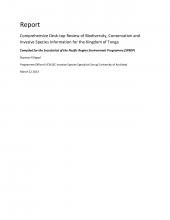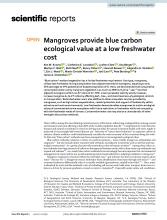Successful eradication of signal crayfish (Pacifastacus leniusculus) using a non-specific biocide in a small isolated water body in Scotland


Island and Ocean Ecosystems, BRB
Available Online
Ballantyne, L.
,
Baum, D.
,
Bean, C.W.
,
Long, J.
,
Whitaker, S.
2019
The North American signal cray?sh (Pacifastacus leniusculus) has been present in Scotland since at least 1995 and the species is now known to be present in a number of catchments. Once established, few opportunities for containment exist and eradication can often be impossible to achieve. However, in small, isolated water bodies, the application of a non-cray?sh-speci?c biocide has provided the opportunity to remove this species permanently. In July 2011, signal cray?sh were discovered in a ?ooded quarry pond at Ballachulish in the Scottish Highlands. This is an isolated site located ~100 km from the nearest known population and it is likely that the population was established as the result of a deliberate release of these animals 10 years previously. Experience gained from using the eradication technique at other sites in the UK led to the site being treated with a natural pyrethrum biocide (Pyblast®) in June 2012. Post treatment monitoring from 20122017 indicates that eradication has been successful. Monitoring of native species a?ected by the biocide suggests that both invertebrates and amphibians quickly recolonised the quarry pond. Eradication of cray?sh using biocide is only feasible in water bodies where the entire population of cray?sh can be exposed to a lethal dose and the impact on non-target species can be accepted. The technique is not appropriate for large, connected water bodies, although it may be possible to treat short stretches of canals where biocide exposure can be controlled and isolated populations of cray?sh can be e?ectively treated.








